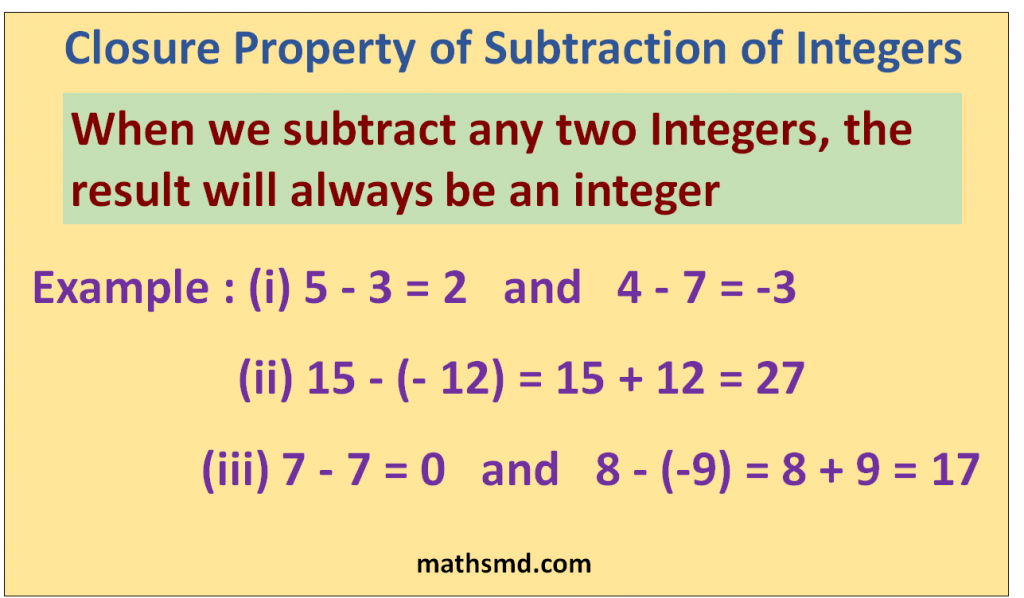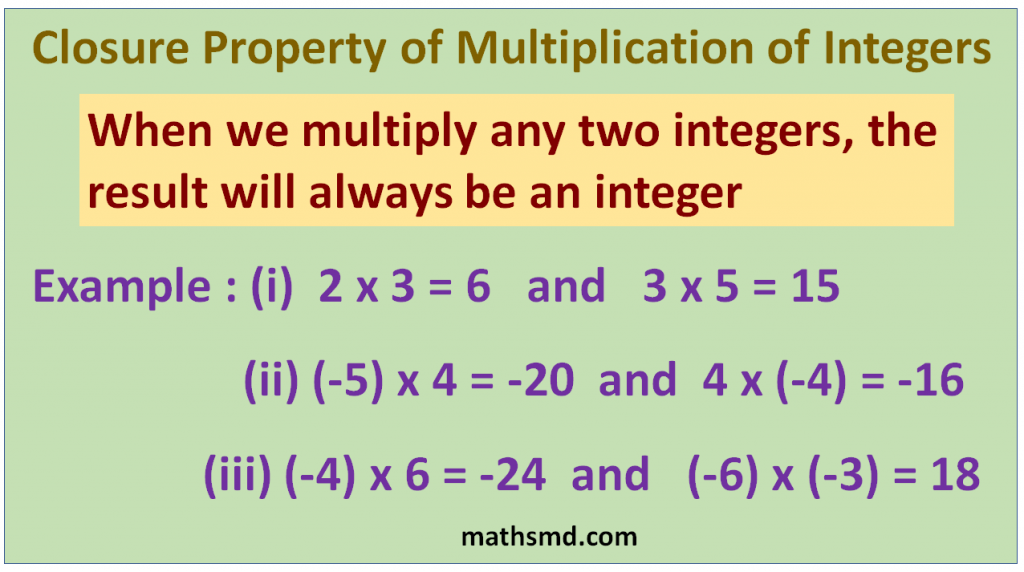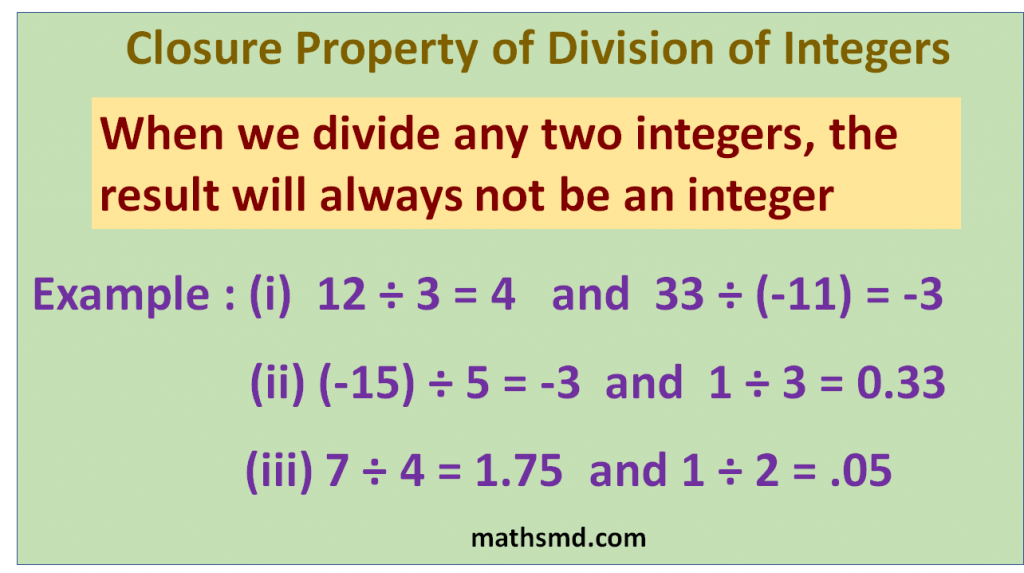Properties of Integers – Closure Property
Closure Property of Integers
Addition
Closure property of integers under addition states that the sum of any two integers will always be an integer.

Let us say for any two integers a and b, either positive or negative.
When we add the two integers, their sum would be an integer i.e. sum of ‘a and b’ is (a + b) would always be an integer.
Therefore, the set of integers is closed under addition.
Example: (i) 12 + 25 = 37
Here, 12 and 25, both are integers, and their sum i.e. 37 is also an integer.
(ii) (-14) + 8 = -6
Here, -14 and 8, both are integers, and their sum i.e. -6 is also an integer.
(iii) 10 + (- 26) = -16
Here, 10 and (-26), both are integers, and their sum i.e. -16 is also an integer.
(iv) 13 + (-20) = -7
Here, 13 and (-20), both are integers, and their sum i.e. -7 is also an integer.
From above examples,
We can say that the set of integers are closed under addition.
Subtraction
Closure property of integers under subtraction states that the difference of any two integers will always be an integer.

Let us say for any two integers a and b, either positive or negative.
When we subtract the two integers, their difference would be an integer i.e. difference of ‘a and b’ is (a – b) would always be an integer.
Therefore, the set of integers is closed under subtraction.
For any two integers ‘a and b’, (a – b) is an integer.
Example: (i) 10 – 3 = 7
Here, 10 and -3, both are integers, and their difference i.e. 7 is also an integer.
(ii) 5 – 10 = -5
Here 5 and -10, both are integers, and their difference i.e. -5 is also an integer.
(iii) 23 – (-12)
= 23 + 12
= 35
Here, 23 and -12, both are integers, and their sum i.e. 35 is also an integer.
So, from these examples, we can say that subtraction of any two integers is also an integer.
Therefore, we can say that the
Set of integers is closed under subtraction.
Multiplication
Closure Property under multiplication states that the product of any two integers will always be an integer.

Example: (i) 5 x 4 = 20
Here, 5 and 4, both are integers, and their product i.e. 20 is also an integer.
(ii) (-3) x (-2) = 6
Here, -3 and -2, both are integers, and their product i.e. 6 is also an integer.
If ‘a and b’ are two integers then their product (a x b) will also be an integer.
Therefore, the
Set of integers is closed under multiplication.
Division
Closure Property under division states that division of two integers does not always result in an integer.

Example: (i) 5/15 = 1/3 = 0.33
Here, 5 and 15, both are integers, and their division i.e. 0.33 is not an integer.
(ii) 1/2 = 0.5
Here, 1 and 2, both are integers, and their division i.e. 0.5 is not an integer.
(iii) 20/2 = 10
Here, 20 and 2, both are integers, and their division i.e. 10 is an integer.
If we divide two integers the result is not necessarily an integer.
For any two integers ‘a and b’, if we divide them their result (a ÷ b) is not necessarily an integer.
From above examples we observe that
Integers are not closed under division.
We conclude that
